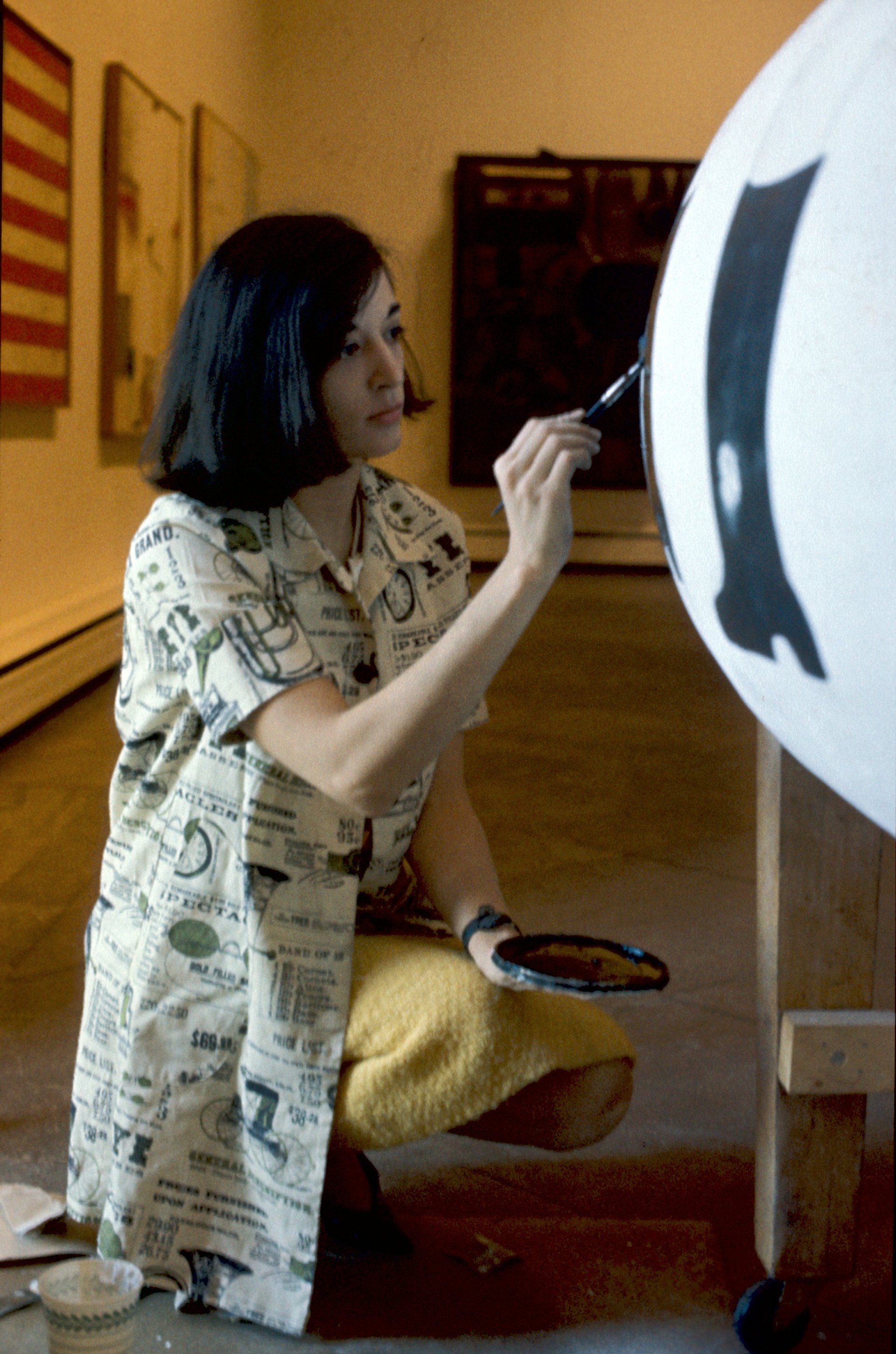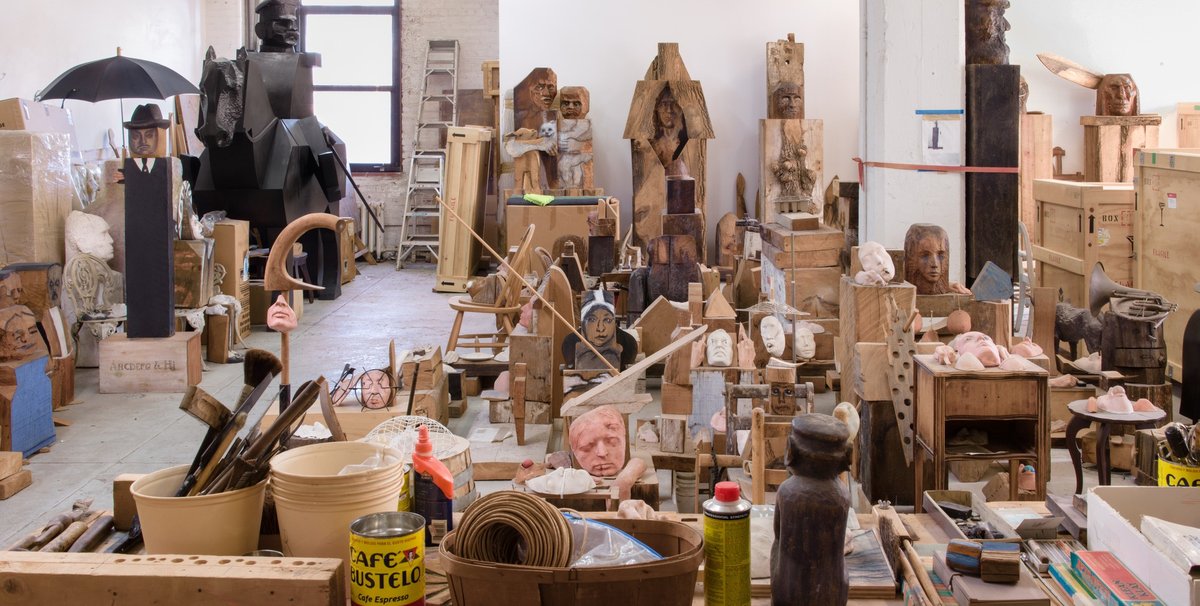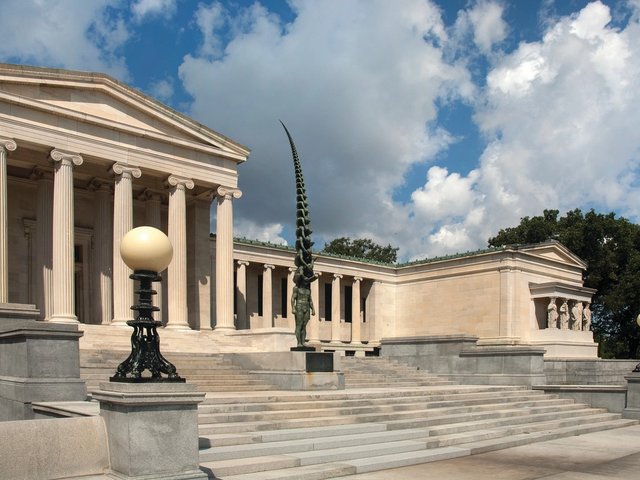The Albright-Knox Art Gallery in Buffalo, New York—which made a splash last year by raising $100m for an endowment and expansion campaign in only three months—has another exciting announcement: the Venezuelan-American artist Marisol (María Sol Escobar), who died in April 2016 aged 85, has left it her entire estate.

The museum was the first institution to acquire a work by Marisol—a sculpture, The Generals, purchased in 1962 at her solo exhibition at the Stable Gallery in New York. As a result of the bequest, the Albright-Knox now owns the world’s largest collection of the artist, whose sculptures mixed Pop, folk and other influences.
The executors of the artist’s estate and the Albright-Knox’s management first met in late 2016 to discuss plans for the bequest. Marisol, whose dealer from 1966 to 1989 was the Buffalo native Sidney Janis, and was later represented by Marlborough Gallery, had no gallery representation at the time of her death.
Born in Paris in 1930 to parents of Venezuelan heritage, Marisol spent part of her childhood in the US and was trained in art in Los Angeles, Paris and New York. She began showing her work in galleries in New York in the late 1950s.
“She always retained her autonomy as an artist,” says Janne Sirén, the director of the Albright-Knox. “Her work is very recognisable even though it shows correspondence with various movements, including Pop art and installation art.”
Marisol represented Venezuela at the Venice Biennale in 1968, and also showed work in Documenta in Kassel that year.
The gift of the estate includes over 100 sculptures Marisol made throughout her 60-year career and over 150 works on paper. The museum plans to create an online archive of all the works. It will also create a dedicated gallery for important pieces from the bequest, named after the artist, due to open in autumn 2021 after the museum’s major expansion and renovation.
The museum is scheduled to close for building work in spring 2019, when it will also change its name to the Buffalo Albright-Knox-Gundlach Museum—the billionaire Jeffrey Gundlach donated $42.5m to the project. During the closure, the museum may lend works from the bequest to other institutions, and has long-term plans to organise exhibitions of Marisol’s work.
Another part of the gift includes archival material: thousands of photographs and slides, the artist’s archive and library, studies and tools.
“There are entire aspects to this extraordinary woman’s career that I think will become apparent as the full spectrum of this bequest is displayed,” Sirén says. For instance, Marisol was a keen scuba diver in the 1970s, and there are photographs of her aquatic adventures as well as films she shot underwater.
Thoroughly documenting the material will be a “gradual slow, diligent process”, Sirén says. The plan is to start in a few months, with the goal of making the material publicly accessible. There are also works by other artists, which Marisol kept at her Tribeca loft, in the bequest, which have yet to be inventoried.
The home in which she lived until her death, “surrounded by her art”, Sirén says, is part of the bequest. Following her specific wish, the loft will be sold by her estate’s executors, and the income will go towards the museum’s endowment.
Overall, the terms of the bequest are “liberal”, Sirén says, in terms of how the museum can display or lend the works. The possible sale of some of the works in the bequest is not off the table, although the director is careful to add that no decision has been taken to sell any of the works, and that the complicated process of deacquisitioning would have to go through the museum’s board.
“I think that as an art museum our intent at all times will be only to look after what’s in the best interest of the artist’s reputation and her legacy. That would be primary to all considerations that we would bring forth,” says Sirén. “She wanted the museum to be the home for her art works.”



